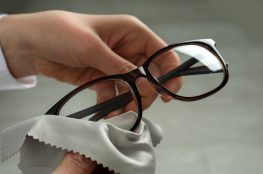Contact lenses offer convenience and clear vision, but proper care is essential to maintain eye health and maximise comfort. Whether you’re new to wearing contacts or a seasoned wearer, following best practices for contact lens care is crucial. In this comprehensive guide, we’ll walk you through the dos and don’ts of contact lens care to ensure your eyes stay healthy and your vision remains crisp.
Dos of Contact Lens Care
Wash your hands prior to handling your lenses: Before touching your contact lenses, thoroughly wash your hands with soap and water. This helps prevent transferring dirt, oils, and bacteria to your lenses and reduces the risk of eye infections.
Maintain a clean and tidy bench space
Choose a dedicated area for handling your contact lenses and keep it clean and clutter-free. This minimizes the risk of contamination and ensures a hygienic environment for lens care.
Clean and disinfect your lenses every day
Clean your contact lenses daily using a recommended multipurpose solution or hydrogen peroxide cleaning system. Follow the instructions provided by your eye care professional and manufacturer for proper cleaning and disinfection techniques.
Use a contact lens peroxide cleaning case
Consider using a contact lens peroxide cleaning system for thorough disinfection. Peroxide-based solutions effectively remove protein deposits and bacteria from your lenses, providing a deep clean for optimal lens hygiene.
Have a pair of backup spectacles
Always have a pair of prescription eyeglasses as a backup in case you need to give your eyes a break from wearing contacts or experience any discomfort.
Dispose of your soft lenses at the recommended time
Replace your soft contact lenses according to the recommended wearing schedule provided by your eye care professional. Using lenses beyond their recommended lifespan can increase the risk of eye infections and discomfort.
Have regular eye examinations with your optometrist
Schedule routine eye exams with your optometrist to monitor your eye health and ensure your contact lens prescription remains up-to-date. Regular exams also allow your optometrist to identify any potential issues early on and provide personalized recommendations for optimal eye care.
Don’ts of Contact Lens Care
Do not sleep with contact lenses
Do not sleep with your contact lenses on, unless you have Ortho-K Lenses specifically prescribed by your eye care professional. Sleeping in lenses not intended for overnight wear can restrict oxygen flow to the cornea, increasing the risk of corneal complications and infections.
Do not swim with contact lenses
Remove your contact lenses before swimming or engaging in water activities. Contact lenses can trap waterborne bacteria and other microorganisms against the eye, leading to infections and discomfort. Invest in some prescription swimming goggles if you intend to spend a lot of time in the water.
Do not lick your contact lenses
Refrain from licking or wetting your contact lenses with saliva to moisten them. Saliva contains bacteria that can transfer to your lenses, increasing the risk of eye infections.
Do not wash your contact lenses in tap water
Avoid rinsing or storing your contact lenses in tap water, as it may contain microorganisms that can adhere to your lenses and cause eye infections.
Do not wear your lenses if your eyes are red or sore
If you experience redness, irritation, or discomfort in your eyes, remove your contact lenses immediately and consult your eye care professional. Continuing to wear lenses when your eyes are irritated can exacerbate symptoms and increase the risk of complications.
Do not wear expired contact lenses or cleaning solutions
Check the expiration dates on your contact lenses and cleaning solutions regularly. Using expired products can compromise lens hygiene and increase the risk of eye infections.
By following these dos and don’ts of contact lens care, you can maintain optimal eye health, minimize the risk of complications, and enjoy clear, comfortable vision with your contact lenses. Remember to consult your Sydney optometrist eye care professional for personalized recommendations and guidance on proper lens care techniques.
Information Disclaimer
The content of this article is meant for informational purposes only and should not be considered a source of professional advice, recommendations, or endorsements. It is not a substitute for seeking expert guidance or making well-informed decisions based on individual circumstances. Although we strive for accuracy and reliability, we cannot guarantee the information's completeness or suitability for all situations. Readers are urged to verify facts, consult experts, and consider their own context before taking actions or decisions based on this content. No warranties, explicit or implied, are provided regarding the accuracy, timeliness, or completeness of the presented information. Relying on this information is at the reader's own discretion and risk. We encourage readers to consult relevant professionals or experts for advice tailored to their specific needs. Neither the author, publisher, nor any affiliated parties will be held responsible for errors, omissions, or damages resulting from the use or reliance on the information in this article.



